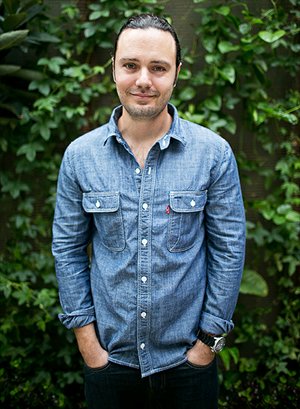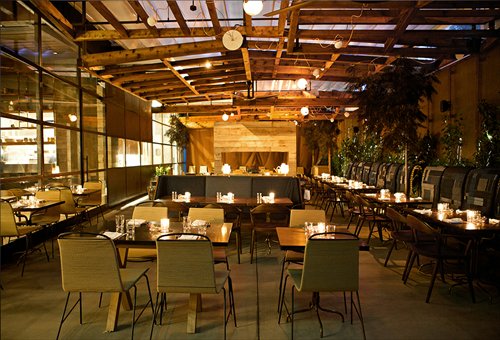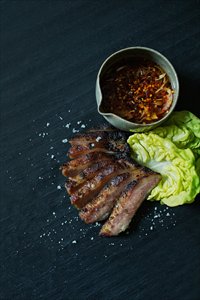Earthy aromas whet appetites

Renowned chef David Myers Photo: Courtesy of Hinoki & the Bird's website

Hinoki & the Bird serves dishes influenced by Southeast Asian flavors. Photo: Courtesy of Hinoki & the Bird's website
A tasty serving for meat-lovers. Photo: Courtesy of Hinoki & the Bird's website
The exotic, earthy aroma from smoking sheets of smoldering hinoki wood hovering over exquisite black cod is the first hint that diners at celebrated chef David Myers' newest restaurant are in for a culinary adventure.
Hinoki & the Bird, the Japanophile chef's Silk Road-inspired restaurant, borrows heavily from the travels of Myers and Executive Chef Kuniko Yagi, who left banking a decade ago and worked her way up from the kitchen's lowest rungs to her current, globe-trotting career.
The sleekly casual eatery, located near some of Los Angeles' top talent agencies, is a departure from Sona, Myers' elegant, Michelin one-star restaurant that opened in 2002 - a year before Food & Wine magazine bestowed on him a prestigious "Best New Chef" award.
After Sona closed in 2010, Myers and his executive chef hit the road - eating, tweeting and picking up inspiration throughout Asia.
Their journeys inform dishes such as spicy sambal skate wing, drunken duck breast and hinoki-scented black cod, the head-turning dish referenced earlier.
The telegenic duo, who are familiar to fans of foodie shows such as "Top Chef" and "Iron Chef America," spoke with Reuters about how travel informed their careers and their latest project.
Q: David, what was the inspiration for Hinoki & the Bird's name?
A: Hinoki is an incredible cypress tree in Japan that has the most wonderful aroma. The bird component was to capture the essence of travel and how important travel is to the creative process. It's about the connection from California to Japan. We chronicle the bird's travel and bring it into the menu.
Q: David, what is your vision for Hinoki & the Bird?
A: I think California is the gateway to Asia. The idea is to showcase the California bounty and the scent of the Silk Road. The flavors are light, vibrant and healthy. You can come in and eat several different things and you're not feeling heavy. You're feeling sharp and you're ready to go the next day. I've only felt that in Asia - where you can eat a lot and drink a lot and feel great. The food of Southeast Asia is nothing but drinking food - it's about going around having beers and going to the next place.
Q: David, which dish on Hinoki & the Bird's menu best illustrates how your travels through Southeast Asia have influenced your food?
A: The sambal skate wing. That's our version of a barbecue skate wing from a hawker's stand in Singapore. That's the classic hawker stand dish.
Q: Kuniko, what inspired you to leave banking and become a chef?
A: I wanted to make sure I could have a job anywhere in the world. I thought, maybe if I can cook really well I can go anywhere in the world and be able to have a job. (In the beginning) I wasn't able to speak English much - but I thought I could mimic what people in the kitchen do.
Q: Kuniko, what advice would you give someone who makes a similar career leap?
A: Be humble about who you want to be. Nothing good happens in a year. I've been doing this for 10 years already. I started late. I was patient, and I had a couple of times where I wondered if I made the right choice.
Drunken Duck Breast
1/2 cup sake kasu (sake lees, a yeast by-product of sake making)
1 cup warm water
2 duck breasts
Salt & black pepper to taste
Pre-heat oven to 400 degrees.
In a small pot, place sake kasu and warm water and whisk over low heat until broken down to a loose texture. Remove from heat and let cool.
Score duck skin in a cross-hatch pattern and season with salt and pepper on both sides.
Cover the breasts with the sake kasu and cover with plastic wrap. Let it rest in the refrigerator for one hour.
Wash sake kasu off from duck breast and place the duck skin side down in a sauté pan over low heat, being careful not to burn. Render the skin from the breast, discarding the fat as you go.
When the skin has a golden brown color, place the breast in the oven for 7 minutes, skin side up, for medium rare.